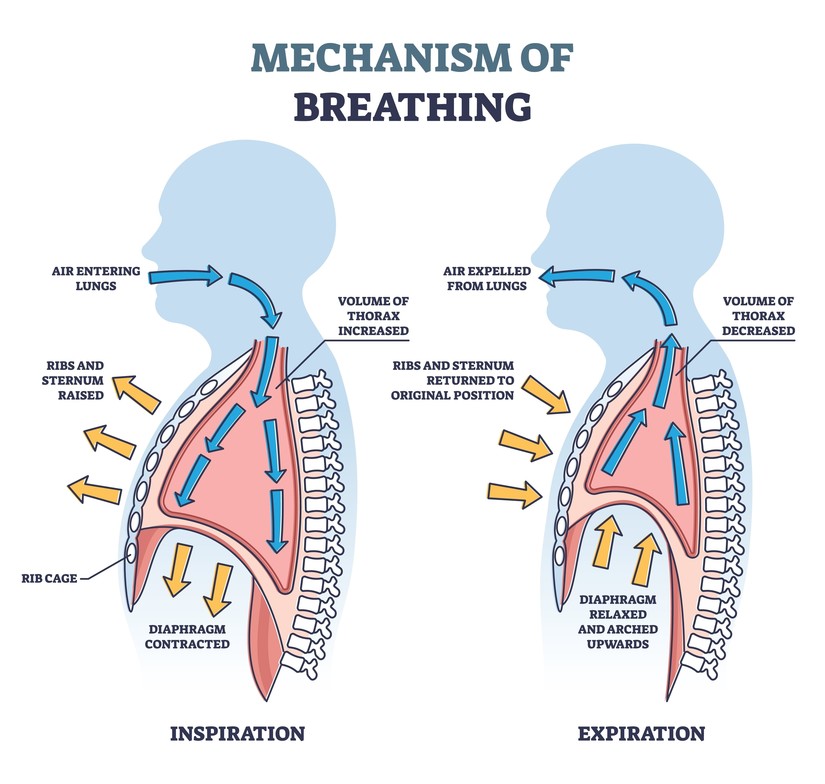%20(1).jpg)
Whether you are an athlete, a gym rat, or someone going about their daily life, coordinating and controlling intra-abdominal pressure within your core canister is crucial. The core canister is a closed, 360-degree compartment that consists of the following:
● The diaphragm at the top
● The abdominal, spinal and hip musculature around the perimeter
● The pelvic floor at the bottom
The intra-abdominal pressure in our core canister changes during different phases of respiration.
When we inhale, intra-abdominal pressure rises:
● The diaphragm contracts down, drawing air into the lungs
● The lungs and ribcage expand out and down
● The trunk stiffens
● The pelvic floor descends
When we exhale, intra-abdominal pressure lowers:
● The diaphragm relaxes, air leaves the lungs
● The lungs and ribcage recoil back to resting position
● The trunk relaxes
● The pelvic floor ascends

A normally functioning core canister can manage these intra-abdominal forces throughout the day by distributing them evenly across the canister and preventing overload on any one structure. For most day-to-day needs (standing up, walking, sneezing, etc.), this happens with little conscious effort on our part.
For higher-level demands, we can deliberately leverage these mechanics by abdominally bracing to assist us with things like heavy lifting.
The first step in developing good pressure management is mastering diaphragmatic breathing, which sets the foundation for coordinating and manipulating the core canister.
Try this at home:
1. Imagine you have a donut pool floatie around your waist
2. Inhale deeply, 360 degrees around into your lower abdomen, to “fill the tank”. Finish inhaling when you feel like you have gently met the edges of the imaginary floatie.
3. While inhaling, bring awareness to your saddle region; relax the pelvic floor like you’re about to go to the bathroom.
4. Gently exhale, letting things recoil to normal.
Poor intra-abdominal pressure management is a common problem across many ages and stages. Issues that typically crop up as a result of pressure mismanagement include:
● Leaking urine, feces, and/or gas during normal activities of daily living, sports, or exercise
● Leaking energy/efficiency in higher level core demands (e.g., gymnastics, Crossfit, powerlifting, weightlifting)
● Uncontrolled hard coning of a hernia or diastasis recti
● Symptomatic pelvic organ prolapse or pelvic pressure/heaviness
● Hemorrhoids from excessive straining during bowel movements
If you’re experiencing any of the above, exhaling during challenging movements is a good rule of thumb. This acts as a “release valve” to reduce stress on structures that are less prepared to handle high intra-abdominal pressures.
Check in with our pelvic physiotherapists to better assess the dynamics of your pressure management under load!
Want to learn more? Book an appointment with Sophie Szczesniak at Great North Physiotherapy. Schedule online at www.greatnorthphysio.ca or call 289-606-0966 to speak with our team.
Always consult a healthcare professional before starting a new exercise routine and prioritize consistency and good form for optimal benefits.






